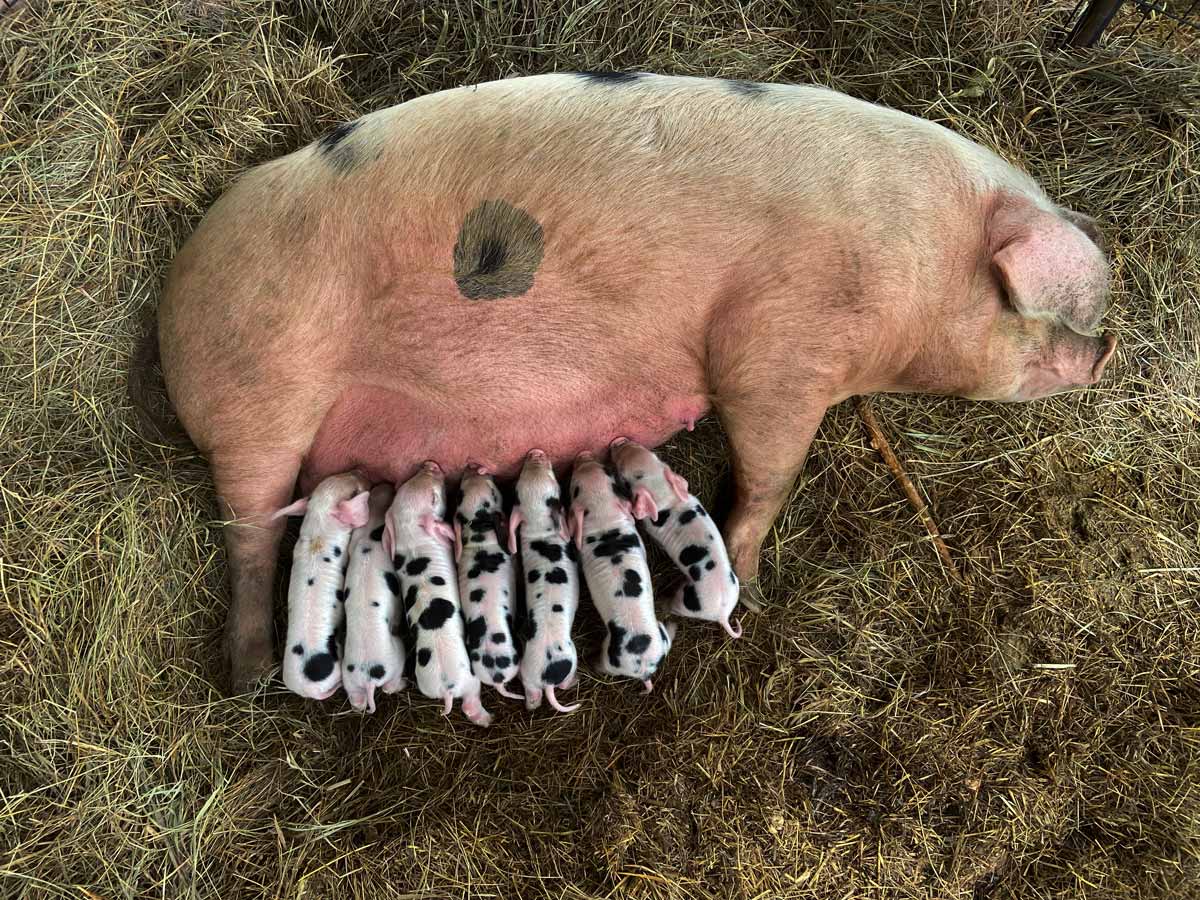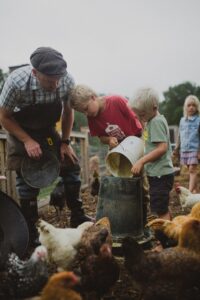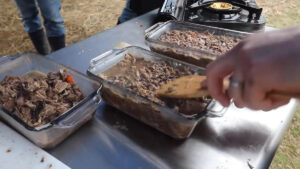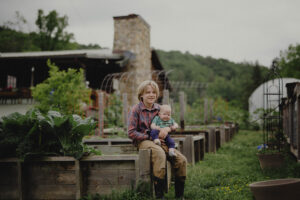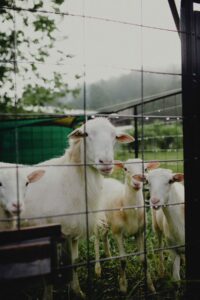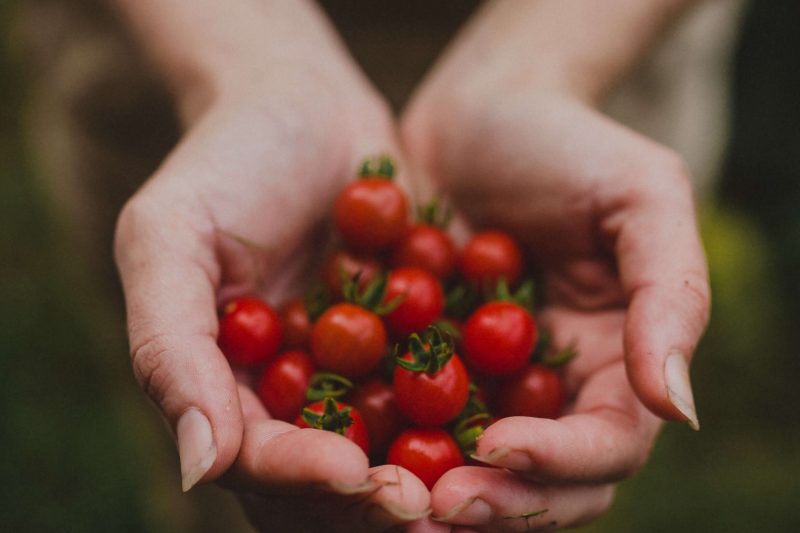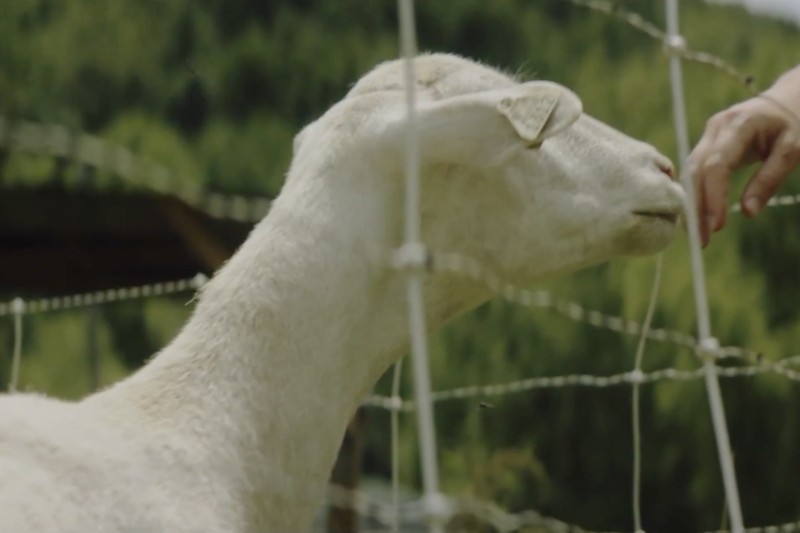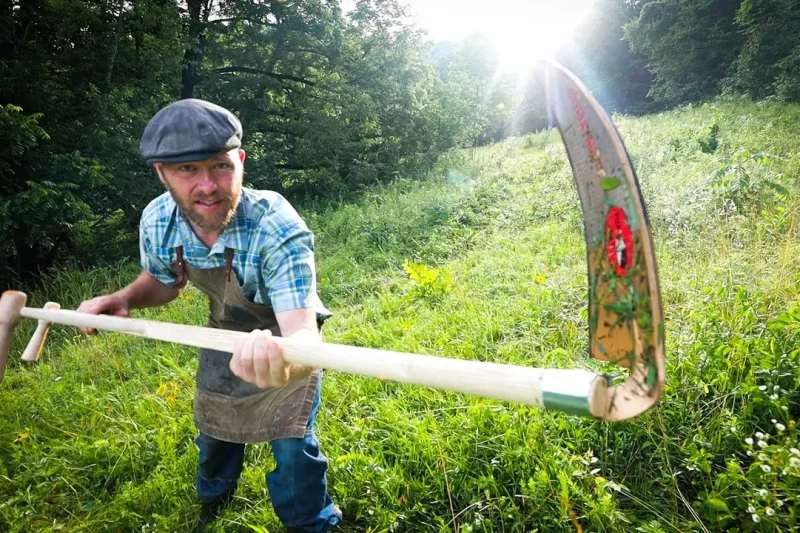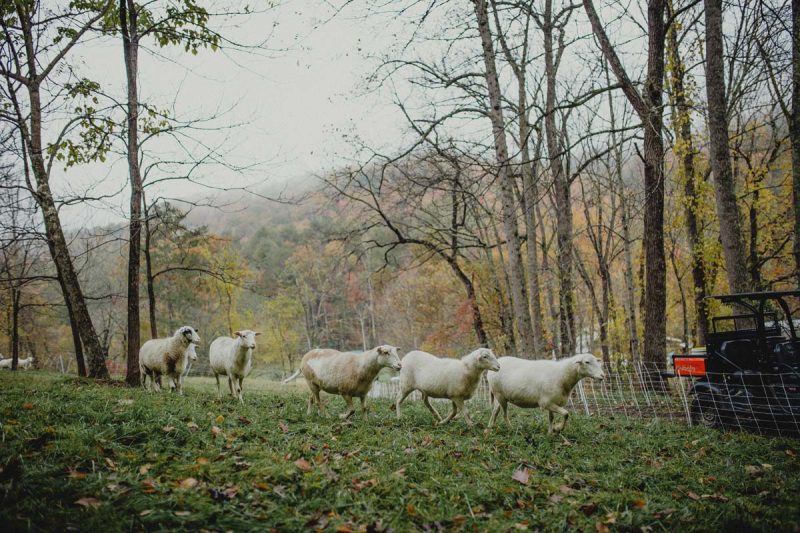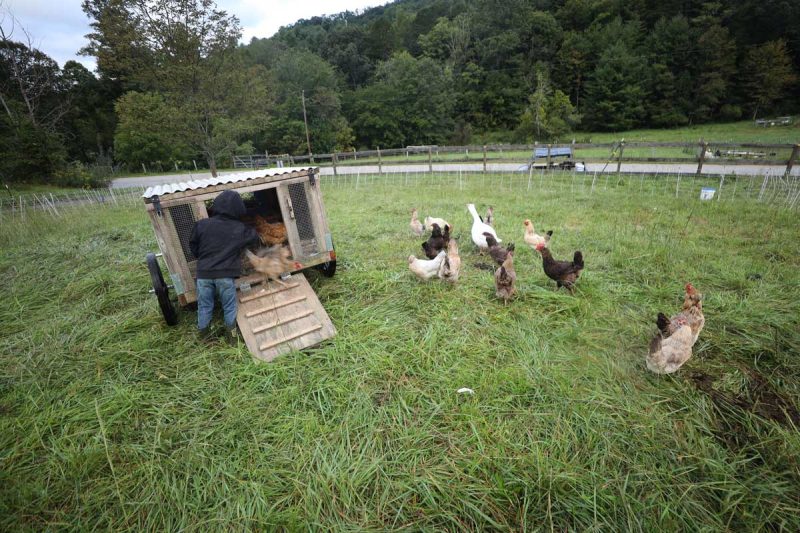After your piglets have arrived, read this post to get started with pigs and to know what to prepare for next.
This post contains images of pig birth/afterbirth. If you don’t want to see these images, check out these other posts on the BLOG.
Why We Breed Pigs
Heritage pigs are a beneficial addition to provide sustainability in the permaculture farming approach. In addition to providing meat and homemade lard for our family, they also till and fertilize our land to grow abundant gardens or create more useable space in the forested areas of our property.
The excess from these gardens, or the unwanted brush in the forest, produces food for our pigs, and the cycle continues.
Pigs have amazing instincts and need little outside help in birthing a litter of pigs. I have great respect for what these animals provide, so providing the best possible life for our pigs is the effort I’d like to give in exchange for what they give us.
Gilts vs. Sows
It is important to know if you have a sow or gilt momma pig.
- Sow – A sow is a pig that has given birth in the past.
- Gilt – A gilt is a pig having babies for the first time. If your pig is a gilt, it is essential to observe her because you never know how she will react to the birthing process.
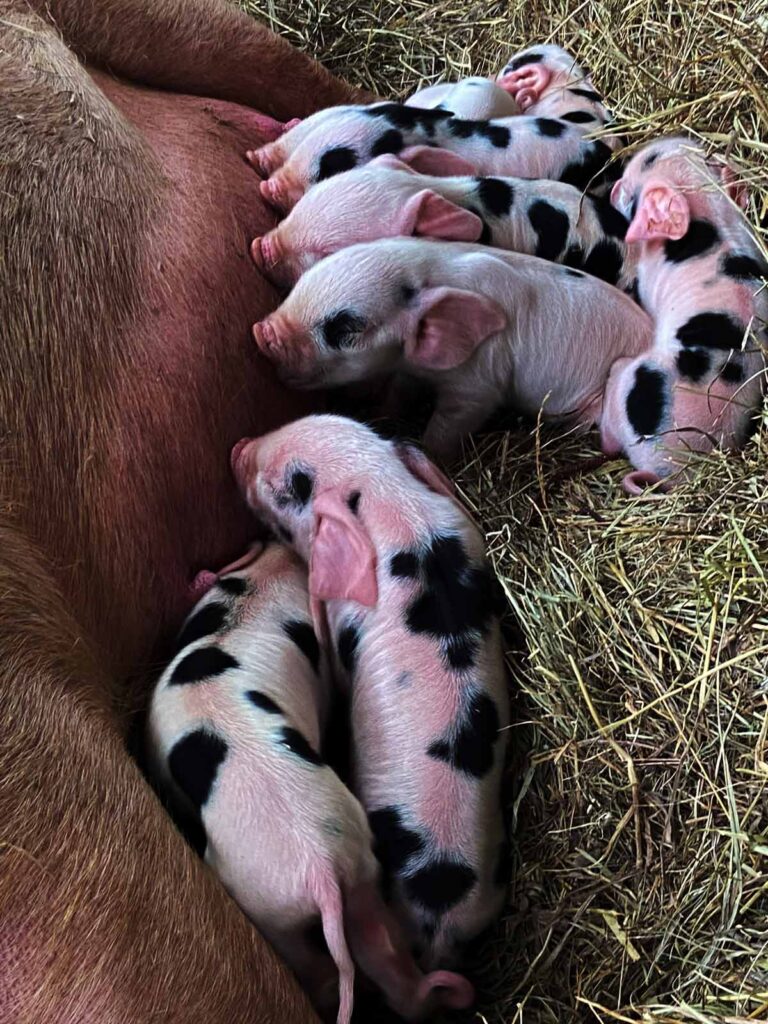
Supplies Needed
An average pig is pregnant for three months, three weeks, and three days. Knowing that piglets will be coming soon, it’s time to get prepared.
- Stall – Also known as a farrowing hut. A stall needs to be big enough for the sow to move around with the piglets. Our stalls are big enough to have an extra gilt in the stall. If you don’t have a stall, that’s OK, too. Sows can give birth in the field. Just give them some hay, that’s it. Pro-Tip: We have found that putting two gilts in a stall allows one to be on the lookout while the other can nurse and be attentive to her piglets. Because we have a heritage breed called Old Spots, we know that they typically do well with other pigs giving birth around them.
- Mulch – Having a safe, clean, and dry stall will help with birthing. We use clean bedding in the stall, which is easy to clean and replace when needed.
- Hay – Nesting is an instinct of pigs to gather hay and make a bed. Provide plenty of hay for your sow or gilt so she can nest.
- Food and Water – Pigs always need clean, fresh water. Our DIY pig waterer makes that way easier. Also, be sure to keep enough food in the stall for your pig to eat throughout the day.
- Supplements – We put a three-way cow feeder in the stall full of the following health boosters for our momma pigs:
- Charcoal – Charcoal is suitable for a pig’s gut health.
- Kelp – Kelp is full of nutrients for your pig. It will help boost their immune system as well.
- Swine Nutri Balancer – This organic mix of minerals and vitamins promotes good health in your pigs and is excellent for nursing sows.
- Paper Towels – After the piglets are born, it is a good idea to dry them off with towels or paper towels. Drying can prevent them from becoming chilled.
- Heat Lamp – It is a good idea to make sure your stall does not have a breeze blowing through it. We also put a heat lamp in the stall to keep the piglets warm, but we make sure there is an area where your sow can stay cooler. You don’t want momma to overheat.
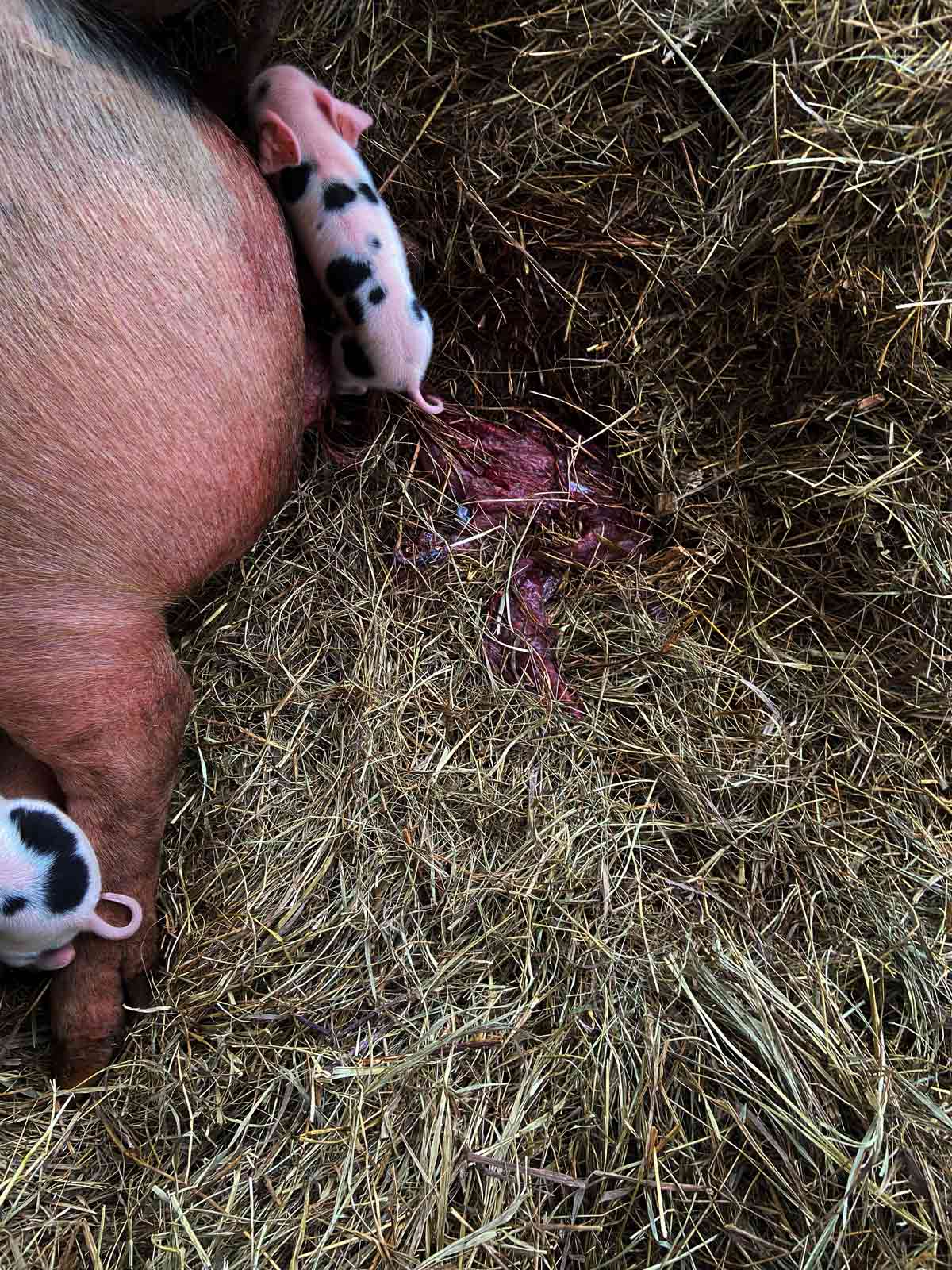
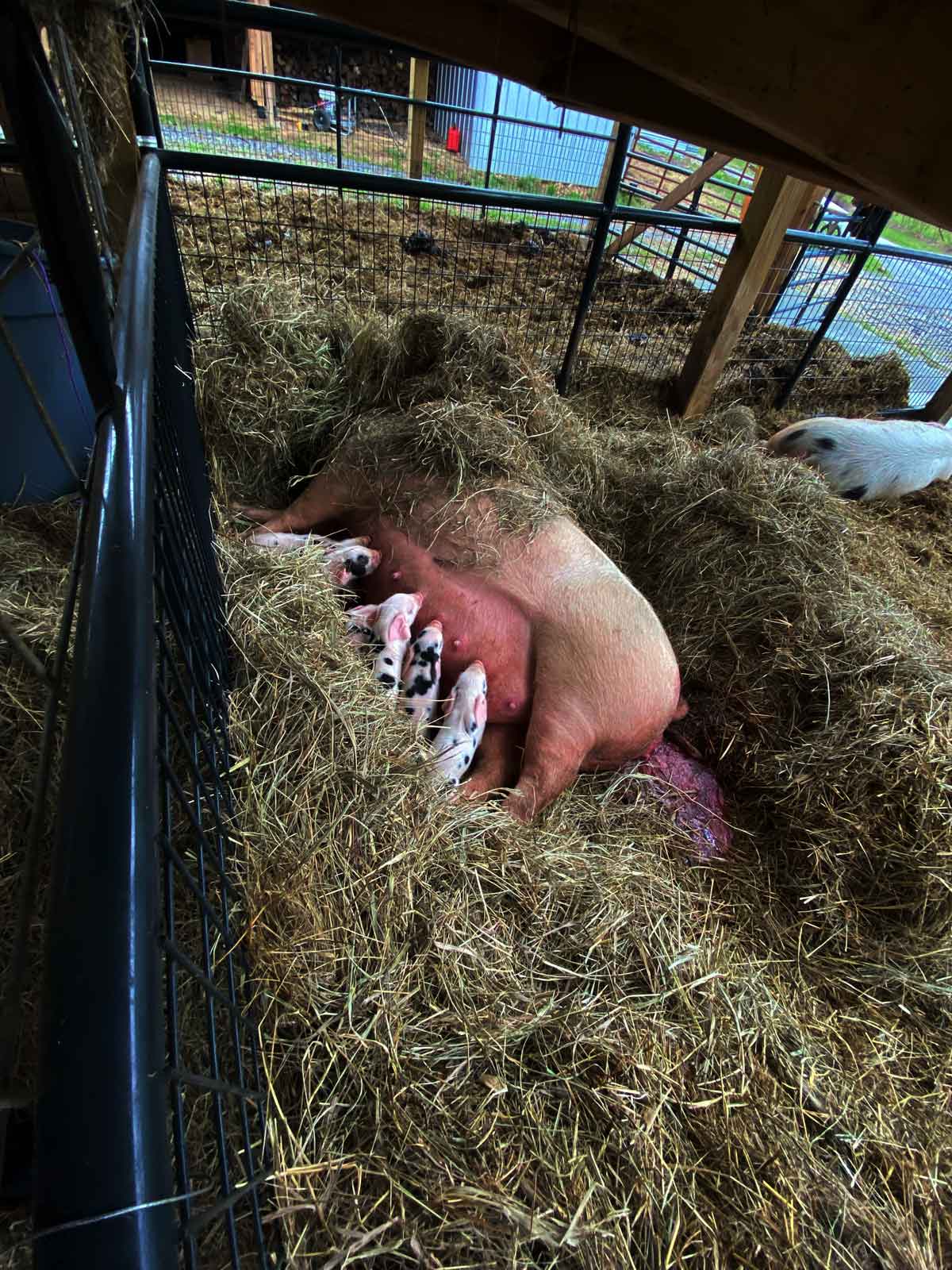
Birthing Piglets Step-by-Step
The process of giving birth to pigs is called farrowing. It is important to keep an eye on your momma during these stages. It is possible to miss the birthing process, but it is a good idea to continually check on your pregnant sow or gilt during the due date window.
- Preparation – The first visual signs of this stage of birth will be extreme nesting, self-isolation, and enlarged teats. A few days before birth, the piglets will begin to drop down into the birth canal, which will cause slight discomfort in your pig. During this time, you will want to make sure your pig has been provided a clean stall with hay for nesting, fresh food and water, and the supplements listed above.
- Birthing of the Piglets – This stage is the farrowing stage. Your pig will start to have visible contractions, and the contractions will intensify. Once your first piglet is born, it can take up to 45 minutes before the next piglet arrives. After the second piglet is born, the piglets will come out 10 to 20 minutes apart if they are healthy. It is normal for your pig to breathe heavily during this stage.
- Birthing of the Placenta – The birth of the placenta will happen a couple of times throughout the process. Still, most of the placenta (afterbirth) comes out after all the piglets have been born. It can take up to 4 hours after the last piglet is born until the entire placenta expels. The farrowing process is complete once the afterbirth has passed. Pro-Tip: Make sure that a piglet is not wrapped up in the placenta. Farrowing complications are rare but can happen. Some complications include prolonged labor, a piglet stuck in the birth canal, or a piglet not breathing. If any of these happen, please seek a vet’s help.
- First 24 Hours After Birth –
- Piglets – Keeping your newborn piglets warm is important. At birth, pigs weigh an average of 2-3 pounds. They do not have much fat on them and typically have no hair. After the piglets are born, you can dry them off with towels or paper towels and place them under a heat lamp in the stall. The most important thing is to make sure all your piglets are nursing. A newborn piglet will nurse approximately 15 times within the first 24 hours of life. The colostrum (first milk) is rich in nutrients and disease-fighting bacteria. Nursing will give the piglets the best chances of survival and healthy life. If you have any piglets that are not nursing you will want to help them get to it’s momma’s teat to nurse.
- Momma Pig – If your pig is a gilt (a first-time momma), you will have to keep an eye on her to make sure she is taking care of her piglets. A first-time momma could not be aware of her surroundings and accidentally lay on her babies and crush them. Keep an eye on her and the newborn piglets. Momma pig will need clean, fresh water. In the first 24-48 hours she will not eat much, but after that, she can start eating up to 20 pounds of feed a day. Keep the stall clean and dry to prevent momma and piglets from getting sick.
Congratulations! You now know how to best care for mama and baby piglets before, during, and just after delivery.
More Posts You May Enjoy
- Raising Pigs for Beginners
- Castrating Pigs
- How to Butcher a Pig (In Just 10 Steps)
- Homemade Bacon (Cured, Smoked, Cooked)
- How to Make Head Cheese
- Mineral Supplements for Animals
- How to Prevent Mastitis in Cows
- How to Treat Mastitis in Cows Naturally
- How to Raise Baby Turkeys (Brooder Stage)
- How to Milk a Cow By Hand
- Newborn Calf Care

